| Author |
Message |
|
Christian Böhling
Industry Professional
|
 Posted: Wed 27 Jan, 2010 2:13 pm Post subject: Germanic Iron-Aged Weapons Posted: Wed 27 Jan, 2010 2:13 pm Post subject: Germanic Iron-Aged Weapons |
 |
|
This post was split from Albion's introduction topic about their "Cherusker Germanic Single Edge Sword".
Hi there,
I´m the blacksmith of the "Chasuari" and I have done much of their iron stuff, and of course more than one of this type of swords from the bog-finds and of funeral offerings. I thought it would be a good idea to give a short making of.
I use a high carbon steel and lenghten it under the power hammer. Then I use the technique showed below in the drawing.
After rough finishing it, making the heat-treatment and tempering, I finally clean the blade. I don´t clean the grip-part of it, because the rough forged surface better connects to the epoxy I use to fix the wooden grip parts on before riveting it with brass. Hope you like it. The original was found in Putensen near Hamburg and measures 69 cm total. So it is a bit shorter than Peter Johnsson´s which is - if I am correct - found in Åsby/Sweden.
And here it is:[
 Attachment: 104.32 KB Attachment: 104.32 KB
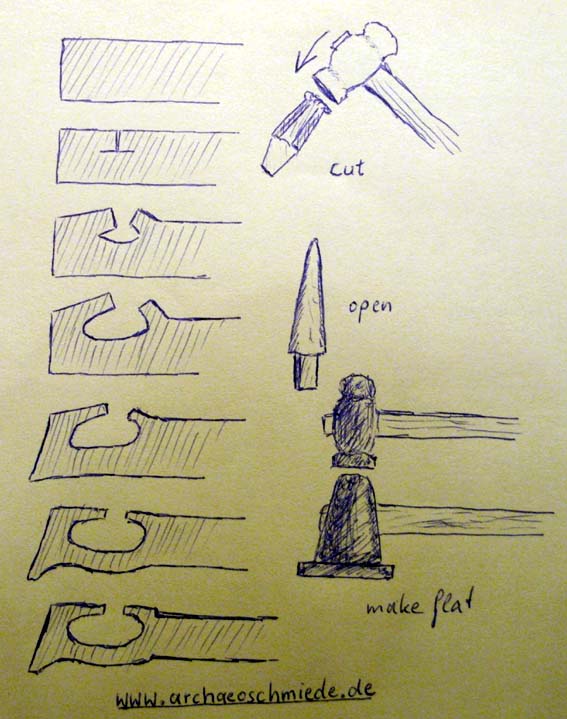
 Attachment: 81.95 KB Attachment: 81.95 KB

www.archaeoschmiede.de
www.eisenzeithaus.de
Last edited by Christian Böhling on Wed 27 Jan, 2010 2:17 pm; edited 1 time in total
|
|
   |
 |
|
Myles Mulkey
|
 Posted: Wed 27 Jan, 2010 2:16 pm Post subject: Posted: Wed 27 Jan, 2010 2:16 pm Post subject: |
 |
|
| Christian Böhling wrote: | Hi there,
I´m the blacksmith of the "Chasuari" and I have done much of their iron stuff, and of course more than one of this type of swords from the bog-finds and of funeral offerings. I thought it would be a good idea to give a short making of.
I use a high carbon steel and lenghten it under the power hammer. Then I use the technique showed below in the drawing.
After rough finishing it, making the heat-treatment and tempering, I finally clean the blade. I don´t clean the grip-part of it, because the rough forged surface better connects to the epoxy I use to fix the wooden grip parts on before riveting it with brass. Hope you like it. The original was found in Putensen near Hamburg and measures 69 cm total. So it is a bit shorter than Peter´s which is - if I am correct - found in Åsby/Sweden.
And here it is: |
I'm impressed!
|
|
  |
 |
|
Christian Böhling
Industry Professional
|
|
   |
 |
|
Peter Johnsson
Industry Professional
|
 Posted: Thu 28 Jan, 2010 12:56 am Post subject: Posted: Thu 28 Jan, 2010 12:56 am Post subject: |
 |
|
Thanks for showing your work Christian.
I find the early iron age in northern Europe fascinating and I hope that the artifacts and weapons of that period will gain a wider popularity.
It is great to see what groups like the Chasuari are doing. I find your interpretations inspiring and compelling.
As a smith one has to admire much of the work that was done, and I am sure you agree with me there. Over the last few years I have examined many of these single edged swords. They have a very businesslike feel to them: made with an eye for economy of material and pragmatic sense of function. Still, I would not describe them as crude. There is often quite a bit of refinement in the shape. This is one of the greatest challenges for us craftsmen today: to capture that character in reconstructions.
Keep up your good work!
I would greatly appreciate to hear your reactions on the "Cherusker". I hope you guys will get opportunity to try one out and come back to me with your impressions.
What has impressed me with these blades is how crisp the definition of the edge is. When they are not swollen by rusting, the cross section of the blades are balancing right at the border of "too thin". These guys cared about acutely cutting edges... 
|
|
   |
 |
|
Christian Böhling
Industry Professional
|
 Posted: Thu 28 Jan, 2010 3:42 am Post subject: Posted: Thu 28 Jan, 2010 3:42 am Post subject: |
 |
|
Hi Peter,
you are absolutely right! The economic use of material that the original material show us was impressing me much, when nowadays modern craftsmen say "forge thick - grind thin", they tried to use all material which was availlable to "forge close to the end...." So I formed the grip out of the full material when most modern craftsmen would do it by cutting it out...
But what really impresses me is what I have seen through the finds of Illerup Ådal, I have been to Moesgaard several times and found blades which were finished so acourate - we both know the octagonal blade from that site, we have had it here at our museum where I am employed in Kalkriese for the time of our special exhibithion 2009! I have done a few lance heads from Illerup to see how this is to be done without modern tools - and I was really shocked when Jörgen Ilkjaer said, they must have done thousands of them inner a few years just to prepare on one attacking of Jutland.
At the moment I work on a so called roman spatha from Illerup with octagonal blade...can only show you a small impression of it. I first forged it and then profiled it´s octagonal cross section with a rasp like knife makers would have done it, it was a goddam piece of hard work to do this, now I can make the finish and polish it...But I should have done it from damaskus-steel...but I have to lern much before..
I saw your Åsby-reconstruction at albion and: yes! That meets with the original absolute in any detail! On several comparable finds I have seen some bronze-parts attached to the grip I can not explain myself, maybe we both can some day solve this problem... Good work you are doin there (but I hope the Chasuari will buy my weapons first, hehe  ) But you bring this exeptional early germanic weapon-"industry" to a greater public! Tak you for that!! ) But you bring this exeptional early germanic weapon-"industry" to a greater public! Tak you for that!!
Next images show some pieces I have done: a LaTéne Type lance and a Illerup lance, and an unfinished octagonal Illerup blade, what do you think about it?
 Attachment: 19.55 KB Attachment: 19.55 KB
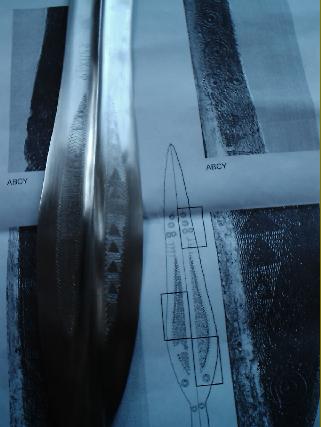
 Attachment: 50.79 KB Attachment: 50.79 KB
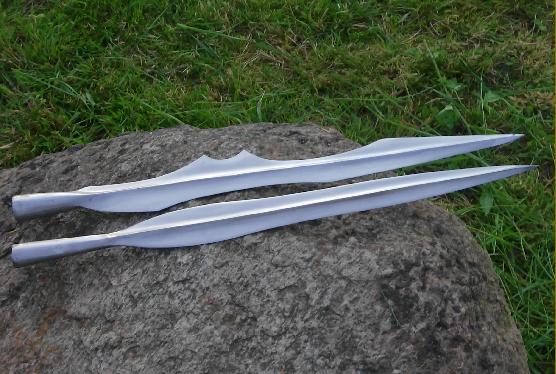
 Attachment: 78.15 KB Attachment: 78.15 KB
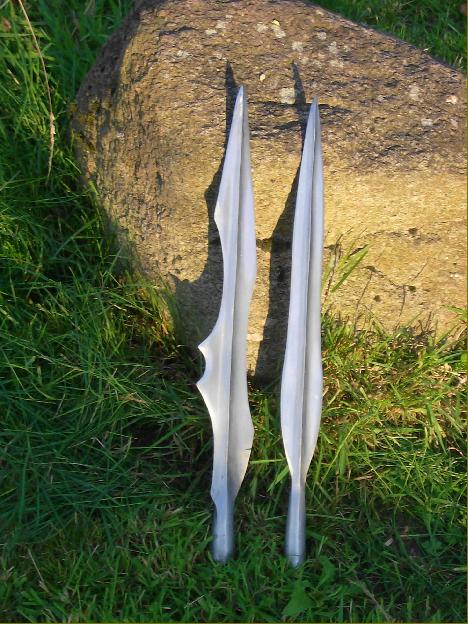
 Attachment: 60.88 KB Attachment: 60.88 KB
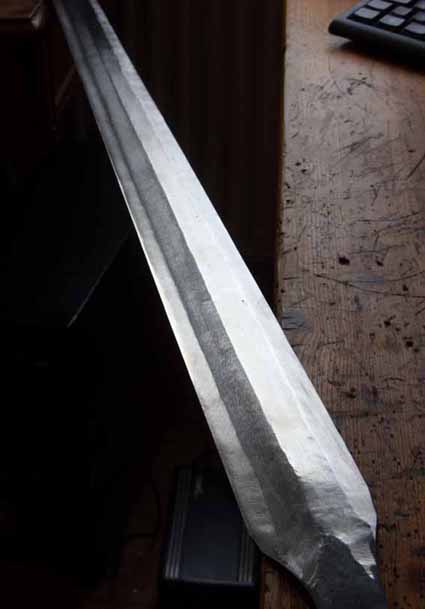
www.archaeoschmiede.de
www.eisenzeithaus.de
|
|
   |
 |
|
Jeroen Zuiderwijk
Industry Professional
|
|
   |
 |
|
Peter Johnsson
Industry Professional
|
 Posted: Thu 28 Jan, 2010 6:19 am Post subject: Posted: Thu 28 Jan, 2010 6:19 am Post subject: |
 |
|
| Christian Böhling wrote: | Hi Peter,
you are absolutely right! The economic use of material that the original material show us was impressing me much, when nowadays modern craftsmen say "forge thick - grind thin", they tried to use all material which was availlable to "forge close to the end...." So I formed the grip out of the full material when most modern craftsmen would do it by cutting it out...
.....
Next images show some pieces I have done: a LaTéne Type lance and a Illerup lance, and an unfinished octagonal Illerup blade, what do you think about it? |
More nice work :-)
You are well on your way to capture the shape of those spear heads. Nt an easy thing to do.
The originals are often incredibly crisp and well defined in form. Some are more crude, but even they for the most part look far better than the work most smiths are able to produce today (and it is not a matter of "simple" tools in ancient times compared to "advanced" today, it is a matter of appreciating shape and knowing function: they had an advantage over us there).
About cutting away material: I actually think this was a viable method. In those instances they would have used hot chisels, that removed large profiles of material. This could be re used again without too much problem by forge welding. Saying that, I think it is realistic that a combination of different techniques were used. In the case of the Åsby sword, there are strands in the material that run straight into the grip part. There is not the curving away and compressing of lines that would be the case if most of the shape was achieved by splitting up and forging down. I am of the impression that most of the "cut out" of the grip was really a *cut out*!
Saying this, it is probably that slightly different techniques were used by different smiths.
A challenge today is to imagine what techniques were used back in the day. We may easily under estimate variety of techniques and tools. We´ll have to try different approaches with an open mind 
BTW I really like your Illerup lance!
|
|
   |
 |
|
Christian Böhling
Industry Professional
|
 Posted: Thu 28 Jan, 2010 7:27 am Post subject: Posted: Thu 28 Jan, 2010 7:27 am Post subject: |
 |
|
....yes, Peter, your arguments for a cutting out of those grips are not to ignore! You´re right, the cut out material is no trash, it´s enough to make a nice knife of  . I agree, both techniques are conceivable. And really, their skill and their technical standard is traditional underrated, as if Apes hardly climbed off the trees suddenly came into the fortune to produce all that fascinatingly precise crafted stuff that is findable in the bog-offer places of Scandinavia and Germany - urrrgh! I think they would laugh about me with my amatheurish trials to copy their products. . I agree, both techniques are conceivable. And really, their skill and their technical standard is traditional underrated, as if Apes hardly climbed off the trees suddenly came into the fortune to produce all that fascinatingly precise crafted stuff that is findable in the bog-offer places of Scandinavia and Germany - urrrgh! I think they would laugh about me with my amatheurish trials to copy their products.
And about the Illerup lances: to me it was most exiting, how thin the blades besides the middle-rip really were, sometimes only a touch of material, they must have been razor-sharp, so that they were not only good to use for thrusting, but for cutting as well, like a sharp knife for a long distance! And their shape is so beautiful, reminding of some old LaTéne-forms having a renaissance 400 years later....but with new fashioned stile like the flared pants of the 70th coming up again in the late 90th with new-fashioned look  Fully fashioned into death, dying with one eye on their clothes Fully fashioned into death, dying with one eye on their clothes 
@Jeroen: yep! lances are widely ignored and commonly underrated. I often see reenactors with the most beautiful blade, fantastic shields but with a crap lance. And when I was asked about prices for a lance-head I made, and I told them, they were shocked, telling me, that this was nearly the price for a sword, ignoring the work it costs to make one proper lance...
Some other pics of that stuff - and a thorsberg-thing, the scabbard-mouth is crappy.
I promise I stop trashing this thread with my pics - this is to talk about Peter´s Cherusker which hopefully will be paid that attention it deserves...
I´m glad to have found your forum, I´ve seen so wonderfull things here made by some god-like hands...
 Attachment: 90.95 KB Attachment: 90.95 KB

 Attachment: 90.44 KB Attachment: 90.44 KB
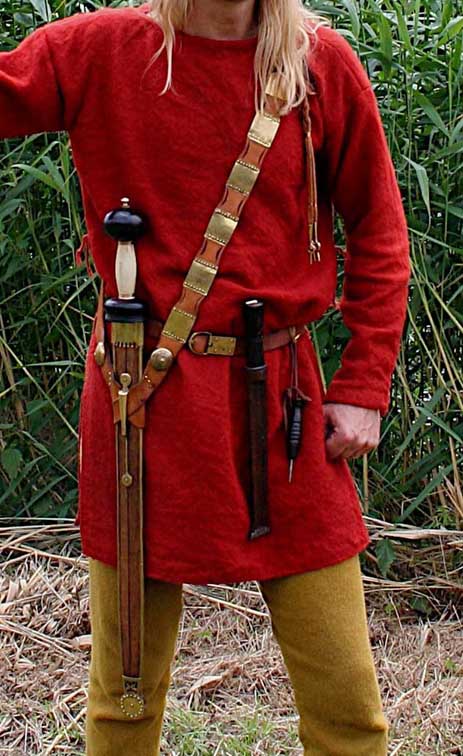
 Attachment: 24.87 KB Attachment: 24.87 KB
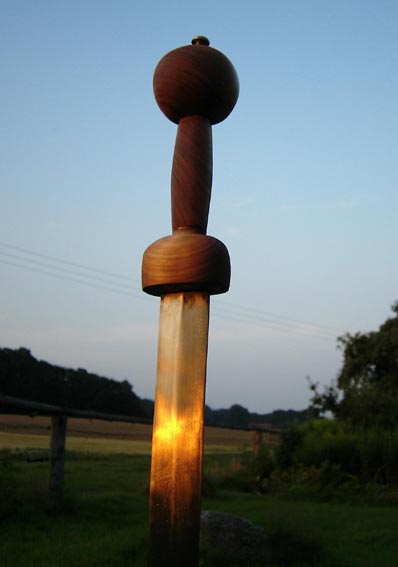
www.archaeoschmiede.de
www.eisenzeithaus.de
|
|
   |
 |
|
Peter Johnsson
Industry Professional
|
 Posted: Thu 28 Jan, 2010 8:39 am Post subject: Posted: Thu 28 Jan, 2010 8:39 am Post subject: |
 |
|
| Christian Böhling wrote: | ....And when I was asked about prices for a lance-head I made, and I told them, they were shocked, telling me, that this was nearly the price for a sword, ignoring the work it costs to make one proper lance...
|
Ain´t that the truth!
I, for my part hope that your friends in the Chasuari group appreciate the full value of your work! They should be prepared to pay for talent and dedication like your´s.
The difference between mediocre work and good work is measured in time spent getting it right. That is often difficult to put a proper price on, but it is important. Otherwise it is not possible to work with serious intent.
I´d like to see more of what you make and also more pictures of iron age re-enactment groups, with interpretations of activities in both war and peace. Perhaps you could start a thread on a theme of germanic iron age?
I know for sure I´d like to benefit by learning of your experiences. I also promise to catch on and add to the mix if I can.
EDIT: Now I saw the photos of your spatha and the warrior kit. Most impressive. I love this stuff! Great to see you work so hard to make the originals justice.
Do you know how many man hours you put into that spatha with scabbard and baldric? I think it would be good for people to know just how labor intensive this kind of work is.
|
|
   |
 |
Petr Florianek
Industry Professional

|
 Posted: Thu 28 Jan, 2010 9:07 am Post subject: Posted: Thu 28 Jan, 2010 9:07 am Post subject: |
 |
|
Christian, this is very good work! i admire your skil and sense for form and line!
Keep at your work an putting pictures here!
Petr
PS. I will in near future work on some pieces from that time period so i feel inspired, thanks
|
|
   |
 |
|
Christian Böhling
Industry Professional
|
 Posted: Thu 28 Jan, 2010 9:39 am Post subject: Posted: Thu 28 Jan, 2010 9:39 am Post subject: |
 |
|
Thank you very much, Peter, now you make me embarrassed .....But I have seen things here in this forum which are by far much above the level of the things I have done...
I can´t say, how many man-hours ..... I don´t count them ... but most of the time is paid to my lack of good machines like a belt grinder. I saw, what a good belt-grinder can help, I have only an old grinding-stone turned by hand and of course an angle-grinder.
The peening of all that small annoying rivets of the baldric was time-intensive but the rest of the scabbard and the baldric was perhaps three days of work (starting late and stopping early with lots of coffee-brakes ).
When I do a sword-blade it takes one day of forging and pre-cleaning, two hours for heat-treatment and tempering normally done the next day, one hour to clean it from tempering, four or five days (starting early and stopping late, coffee comes intravenously) for grinding by hand and polishing. One day for the grip (late started and early stopped - much coffee). I think three weeks for sword, scabbard and baldric but spread over a long period of spare time besides my daily work.
For those Illerup Lances I need a few days, too. I could be much quicker with good polishing tools or good grinders...but this is the plan for the future (I save money to buy an own power hammer and a good belt grinder next summer)
BTW: I am no reenactor, I work at our local archaeology (Varusschlacht; Battle of Teutoberg Forest) as excavator and guide and I am part of a crew who built and organize an iron-age farmhouse in Venne, where we can work with groups - kids and grown-ups, often with sepecial personal backgrounds like hadicaps or disabilities. We just founded a new but small museum showing the finds of the Schnippenburg, a pre-roman ironage site with thousands of offer finds of celtic origin. It will open at April, 24th.
That leads me to the point, you have initiated in your last post! Yes - of course! Let´s start a thread about roman and germanic ironage! There we can discuss all that fascinating stuff!
Greetings to Uppsala!
Chris
 Attachment: 90.24 KB Attachment: 90.24 KB

 Attachment: 75.87 KB Attachment: 75.87 KB
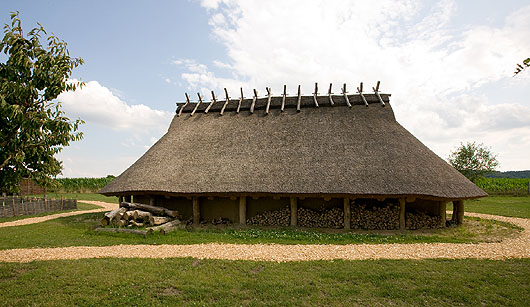
www.archaeoschmiede.de
www.eisenzeithaus.de
|
|
   |
 |
|
Christian Böhling
Industry Professional
|
 Posted: Thu 28 Jan, 2010 9:52 am Post subject: Posted: Thu 28 Jan, 2010 9:52 am Post subject: |
 |
|
Thanks Petr! Let us see pics of your work when you start, it is a great thing to see different people walking the same road!
Chris
www.archaeoschmiede.de
www.eisenzeithaus.de
|
|
   |
 |
|
Jeroen Zuiderwijk
Industry Professional
|
 Posted: Thu 28 Jan, 2010 10:26 am Post subject: Posted: Thu 28 Jan, 2010 10:26 am Post subject: |
 |
|
Ugh, you put yourself down way too much. That's incredible work in such a short time, particularly without beltgrinders etc. I work with pretty much the same limitations, it would take me a fair bit longer. And those spearheads are totally out of my reach. Regarding the comparisson of spearheads and swords, most people don't realized that in many respects the spearheads are as difficult as swords, but then hollow. The latter part puts it up a whole different level of difficulty particularly in the case of seemless sockets (no way I can do that yet in iron).
Jeroen Zuiderwijk
- Bronze age living history in the Netherlands
- Barbarian metalworking
- Museum photos
- Zip-file with information about saxes
|
|
   |
 |
|
Christian Böhling
Industry Professional
|
 Posted: Thu 28 Jan, 2010 2:37 pm Post subject: Posted: Thu 28 Jan, 2010 2:37 pm Post subject: |
 |
|
Indeed Jeroen, the seemless sockets are tricky  ( To my opinion, really good lance-heads made just by forging are more difficult than the simple kinds of sword blades that I have done so far, they need more skill and experience - the case of damascus-swordblades exepting) ( To my opinion, really good lance-heads made just by forging are more difficult than the simple kinds of sword blades that I have done so far, they need more skill and experience - the case of damascus-swordblades exepting)
Iknow it´s off topic but it has been it since a while I fear, but how do you make seemless sockets? forge welded? I have done these lances from CK60 Steel and the sockets showed some dificulty in welding it properly from end to end... But: Let´s ask the admin if we should put this all into a new topic?
I think we should reduce it again to the Cherusker topic, I think Peter would agree...I was so exited to see this forum, that I could not command myself...
BTW: are you doing that bronce-castings at the archaeon
www.archaeoschmiede.de
www.eisenzeithaus.de
|
|
   |
 |
|
Myles Mulkey
|
 Posted: Thu 28 Jan, 2010 4:28 pm Post subject: Posted: Thu 28 Jan, 2010 4:28 pm Post subject: |
 |
|
Hooo! Man, that is one great Illerup kit! I'm working on my own Roman Iron Age kit, but this is pretty much all I could hope for. You have my admiration once again, sir! 
|
|
  |
 |
Jean Thibodeau

|
 Posted: Thu 28 Jan, 2010 5:53 pm Post subject: Posted: Thu 28 Jan, 2010 5:53 pm Post subject: |
 |
|
| Christian Böhling wrote: | Indeed Jeroen, the seemless sockets are tricky  ( To my opinion, really good lance-heads made just by forging are more difficult than the simple kinds of sword blades that I have done so far, they need more skill and experience - the case of damascus-swordblades exepting) ( To my opinion, really good lance-heads made just by forging are more difficult than the simple kinds of sword blades that I have done so far, they need more skill and experience - the case of damascus-swordblades exepting)
|
For socket making maybe you should ask Michael Pikula who made me a spear recently:
http://www.myArmoury.com/talk/viewtopic.php?t=16789&start=90
Michael also made this spear head:
http://www.myArmoury.com/talk/viewtopic.php?t=17600
Maybe he will notice this Topic thread and chime in about how he forges his spear sockets.
( I guess you could also ask him some questions in a P.M. ).
You can easily give up your freedom. You have to fight hard to get it back!
|
|
  |
 |
|
Christian Böhling
Industry Professional
|
 Posted: Fri 29 Jan, 2010 12:19 am Post subject: Posted: Fri 29 Jan, 2010 12:19 am Post subject: |
 |
|
Thank you Jean!
I have done many many spear and lance heads beginning I think 10 Years ago and staring with simple iron. In the last years I make them from a high carbon steel. It was a way of self-trial and errors, before they were acourate to the originals. I forge weld the socket seams which is not an easy thing to do when the material at the end of the sockets should be as thin as the originals are. Maybe I can Post a short making of this special forge welding when I do my next lance. It is always interesting to compare different techniques of different smiths (I think we can only learn from each other). Specially the Illerup-Lanceheads are originally made from a soft center of a soft laminated iron with eges of steel of higher quality. The sockets are the continuing of the softer steel and quite easy to forge weld when there is a proper fire. I will try one in the original technique ( a collegue of mine realized a few pieces for the exhibition of the Illerup finds in the Moesgaard-Museum in Denmark showing the details in the special forge welding of those lanceheads.
BTW: Michaels spearhead looks great! It´s a fine piece of artwork!
The Illerup stuff is in any case a fascinating thing, because it shows all kinds of ironage craftmanship concentrated to one single finding site, including metalwork, bone-carving, wood-crafting, Brass-working and on and on and on. So one has to see Illerup in total. It would be interesting, to research, how many craftsmen in total and how many different types of craftmen worked for those thousands of finds there as they represent one single army defeated at once.
I add some pics to show people who never heard of Illerup before the diversity of craftmanship found at Illerup Ådal...
Below is the recreation of a comb originally found in Illerup together with ca 100 other combs. I made this piece of personal warriers equipment with outsides the bog-finds only seldom comes in appearance:
 Attachment: 101.87 KB Attachment: 101.87 KB

 Attachment: 61.18 KB Attachment: 61.18 KB

 Attachment: 65.96 KB Attachment: 65.96 KB
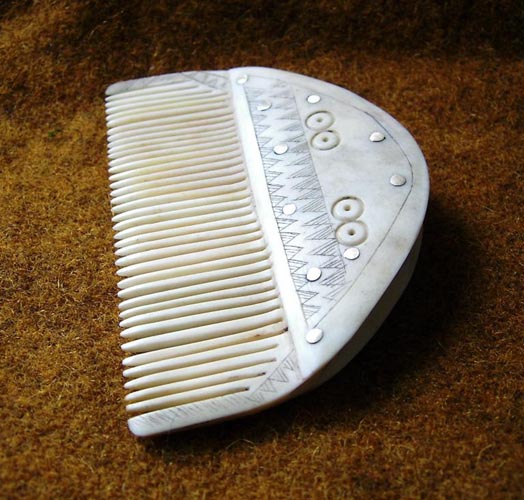
 Attachment: 25.69 KB Attachment: 25.69 KB
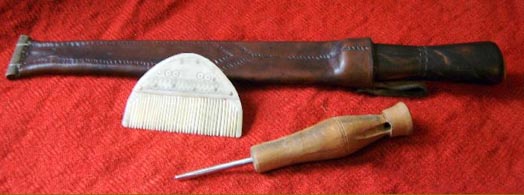
www.archaeoschmiede.de
www.eisenzeithaus.de
|
|
   |
 |
|
Peter Johnsson
Industry Professional
|
 Posted: Fri 29 Jan, 2010 12:45 am Post subject: Posted: Fri 29 Jan, 2010 12:45 am Post subject: |
 |
|
Forge welding spear sockets can be tricky. It does help to work with bloomery iron, however. Much more wiling to take a weld 
To get thin walls, I think there is a possibility they started out with a smaller socket and thicker walls. When the weld has taken it is possible to draw the socket out on a properly shaped mandrel. That would both allow the smith to work over the weld more thoroughly and also to thin down the walls. I think that the faces or planes these sockets have could also be shaped by working at low temperature at the end.
Below I attach pics of a small head for a throwing spear I made a copy of for a local museum. Unfortunately I did not get any photos of my work, only the original. It is a nice one and shows just how crisp and neat the work can be. On the pic of the side of the socket you can make out the end of the weld that did not quite take all the way: there is a small hair line "crack" or cold shut.
 Attachment: 66.77 KB Attachment: 66.77 KB

 Attachment: 19.96 KB Attachment: 19.96 KB
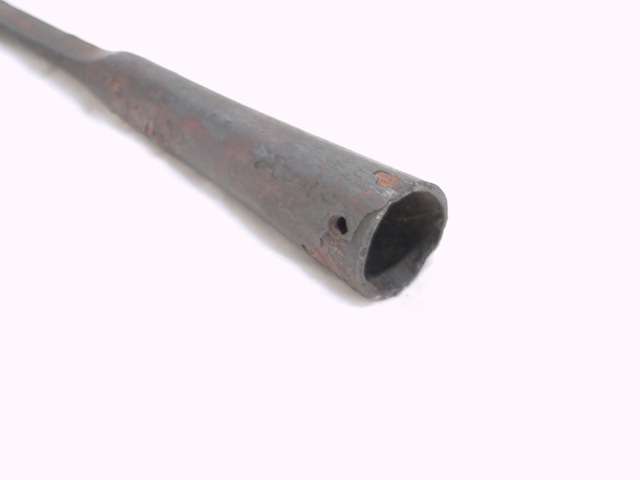
 Attachment: 43.98 KB Attachment: 43.98 KB
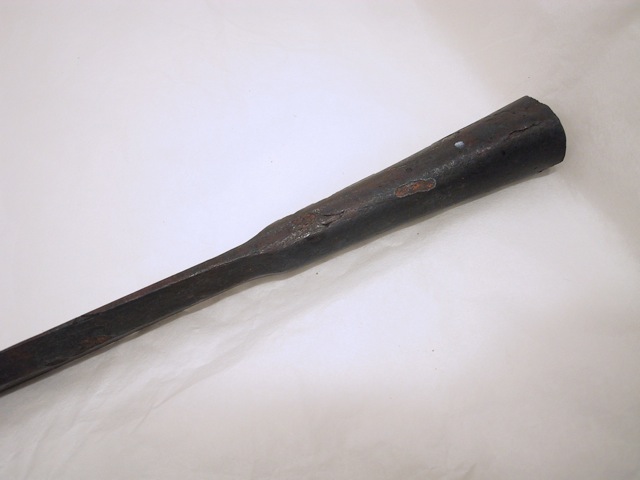
|
|
   |
 |
|
Peter Johnsson
Industry Professional
|
 Posted: Fri 29 Jan, 2010 1:16 am Post subject: Posted: Fri 29 Jan, 2010 1:16 am Post subject: |
 |
|
I attach some work in progress pics of a experiment with a single edged germanic sword. I am not happy with the shape and size of the grip. At first it came out too long. As you see work progress, you may notice I shortened the grip somewhat, but it is still not quite the right shape. The T-shaped section of the grip is something you can see on these blades, but the very broad kind I forged on this blade really belongs to a later type that is shorter and broader. ...Well, this is a test piece made for learning 
I forged it out of wrought iron that is very slaggy having lots of strands. I had to weld it to itself in seven layers to be able to forge it without it splitting apart at temperatures lower than bright yellow. After welding it behaved much better. It does not sow clearly in the pic, but the filed surface shows a very clear "watering", almost like pattern welded material. This is because the heterogenous nature of this material. I think that it is pretty close to what may have been used in these kind of weapons originally. The idea with this experiment is to either cold work the edges or to do a carburizing and see what kind of edge retention I can get.
The grip scales will be made from bone, antler or wood. There are very few remains of complete grips. Sometimes the scabbard remains, but not the grip. The scabbards were often ash wood. This is interesting since it hints that the grip scales were of another material as they did not survive like the scabbard did...
This type of weapon wold have been in use in the last C BC. They faded out mostly during the first C AD, but were still in use in some small areas into the second (or even third?) C AD. The celtic long sword began replacing these weapons already in the first C BC and later on the roman spatha sword reigned almost supreme among the germanic tribes of the north.
Note that there is not direct link of development from these early germanic single edged swords to the sax that came in use at the end of the 5th C AD. It seems the sax had an other origin (but this is another topic completely!). The tribes who used these single edged sword may have called them saxes, but today archaeologists tend to classify them as war knives or single edged swords. They have nothing much in common with the later sax apart from being single edged. Cross section is different, grip construction is different and scabbards are different. Still the old germanic warriors may not have been concerned with such hair splitting academia....
 Attachment: 100.33 KB Attachment: 100.33 KB
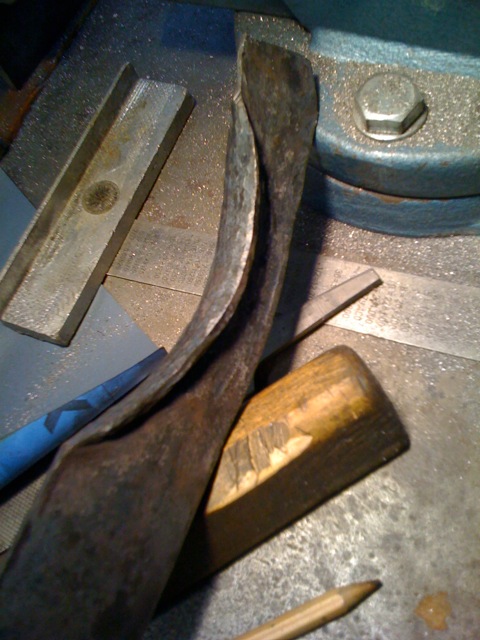
 Attachment: 130.44 KB Attachment: 130.44 KB
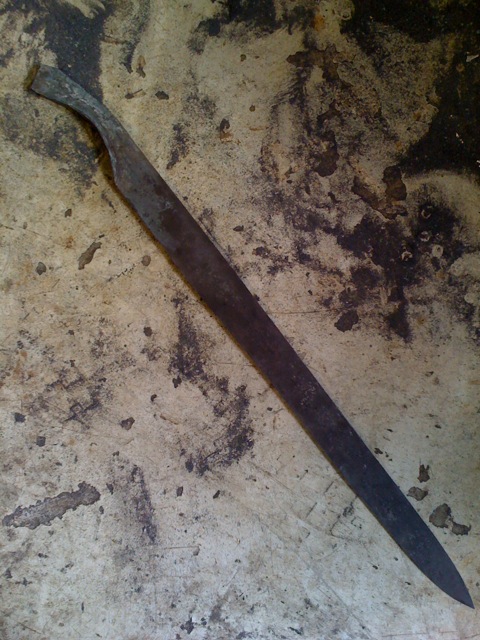
 Attachment: 96.35 KB Attachment: 96.35 KB
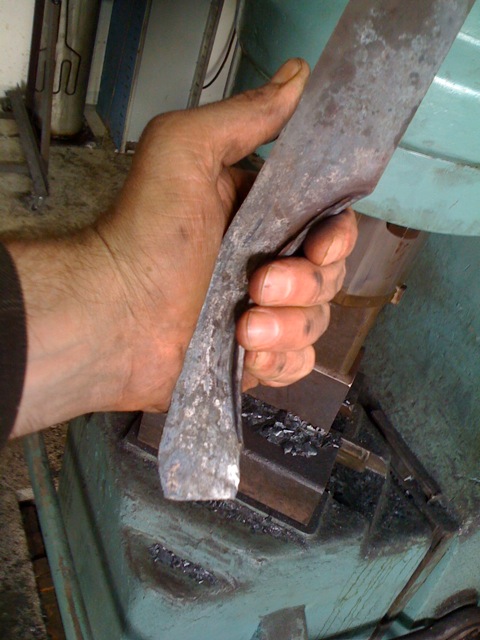
 Attachment: 70.03 KB Attachment: 70.03 KB
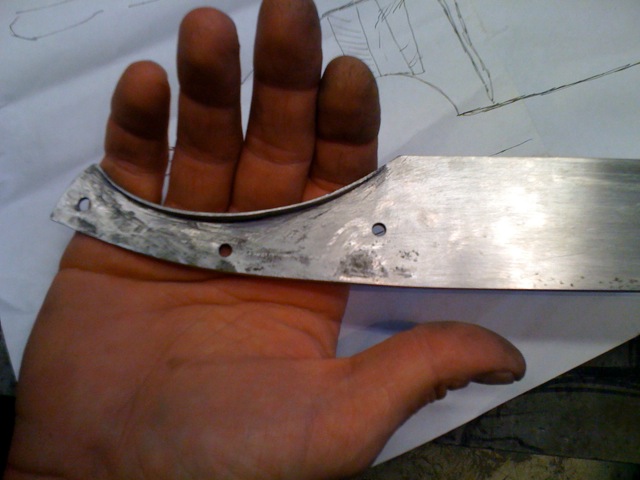
 Attachment: 64.33 KB Attachment: 64.33 KB
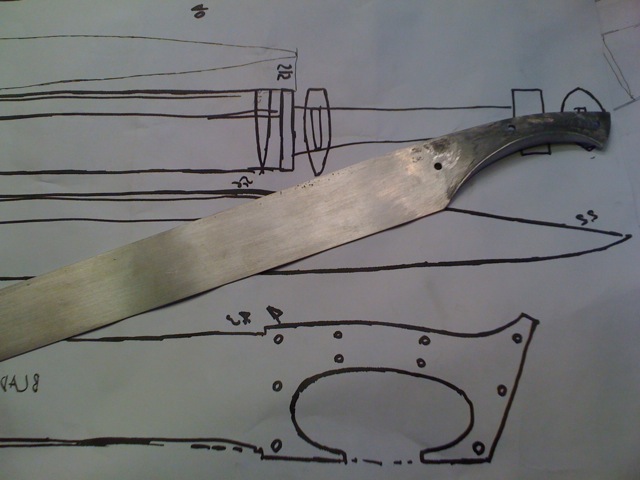
 Attachment: 76.13 KB Attachment: 76.13 KB
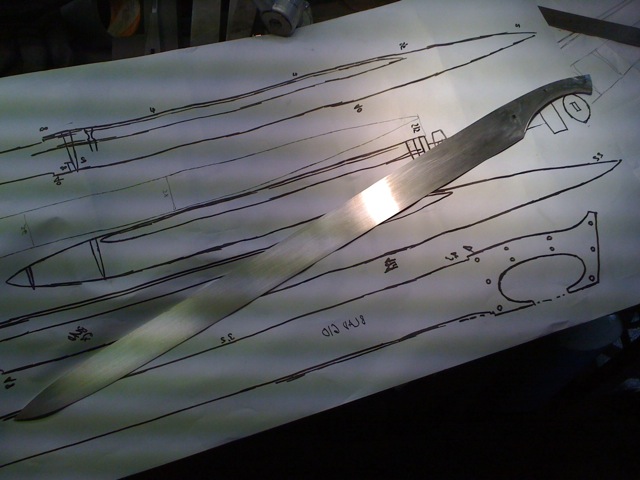
 Attachment: 72.81 KB Attachment: 72.81 KB
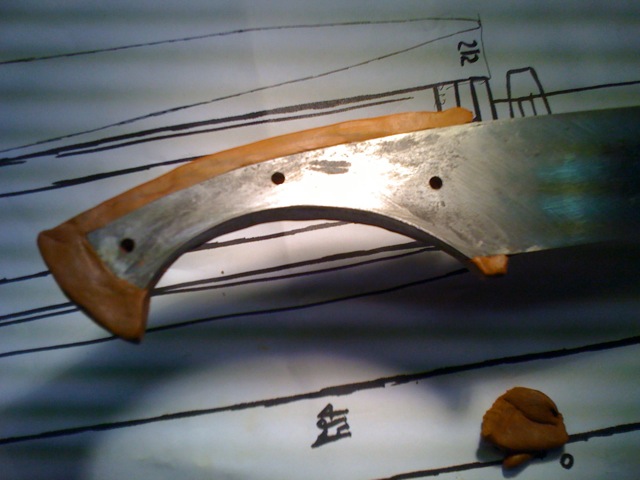
 Attachment: 68.95 KB Attachment: 68.95 KB
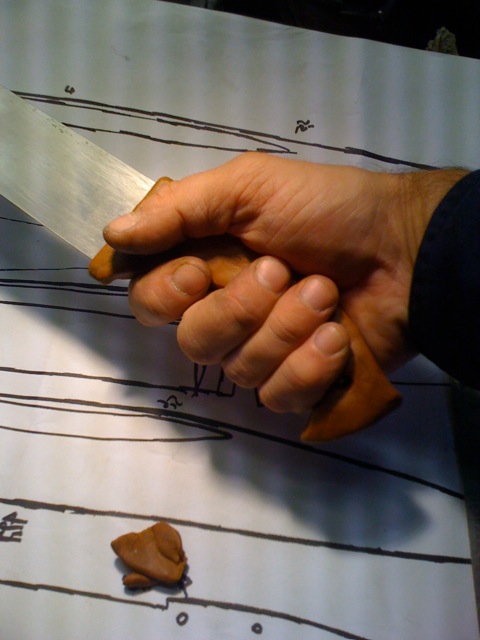
Last edited by Peter Johnsson on Fri 29 Jan, 2010 2:09 am; edited 1 time in total
|
|
   |
 |
|
Peter Johnsson
Industry Professional
|
 Posted: Fri 29 Jan, 2010 1:22 am Post subject: Posted: Fri 29 Jan, 2010 1:22 am Post subject: |
 |
|
This is how I imagine warriors on the shore of the baltic sea may have looked early on in the first C AD.
One guys is going berserk while repelling a band of marauders...
 Attachment: 117.15 KB Attachment: 117.15 KB
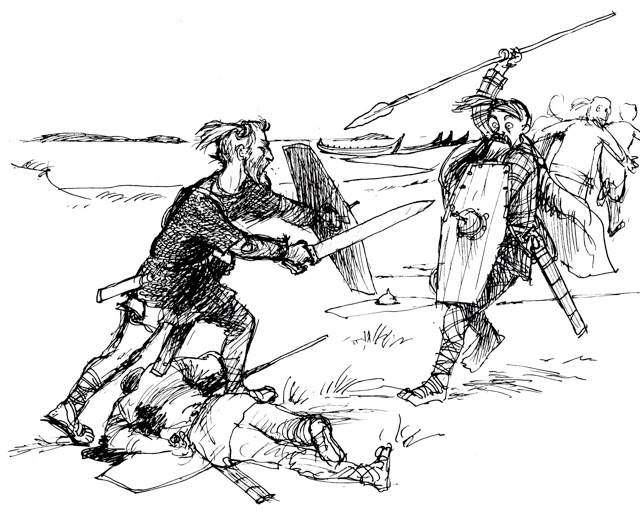
|
|
   |
 |
|
|
You cannot post new topics in this forum
You cannot reply to topics in this forum
You cannot edit your posts in this forum
You cannot delete your posts in this forum
You cannot vote in polls in this forum
You cannot attach files in this forum
You can download files in this forum
|
All contents © Copyright 2003-2025 myArmoury.com — All rights reserved
Discussion forums powered by phpBB © The phpBB Group
Switch to the Basic Low-bandwidth Version of the forum
|

